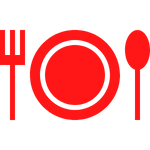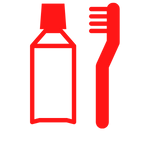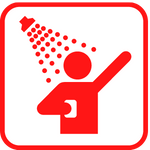Program of Comprehensive Assistance for Family Caregivers
Assessment of the Activities of Daily Living
Background
The VA MISSION Act of 2018 created a new standard for the VA’s Caregiver Support Program’s (CSP) Program of Comprehensive Assistance for Family Caregivers (PCAFC). It also expanded eligibility beyond Post 9/11 caregivers. These changes prompted a revision in the evaluation process which VA established in CFR RIN 2900-AQ48 issued October 1, 2020. The new standards are defined in VHA Directive 1152(1) issued October 1, 2020. Two significant changes are: (1) the Activities of Daily Living (ADL) standard requires care to be provided “each and every time” an ADL is performed and (2) the standard for Supervision, Protection, and Instruction (SPI) now requires “substantial daily care”. This page describes only the part of the Veteran’s Functional Assessment Instrument that deals with Activities of Daily Living (ADL’s).
How To Prepare for the Evaluation:
Under the application process step known as the Veteran’s Functional Assessment, a nurse with the Caregiver Support Program will ask you, the caregiver, and the veteran how you assist with each Activity of Daily Living (ADL) listed below. If you have been providing care for a long time, it is helpful to write down what you do each day to make sure that you capture all of the assistance you are providing and how you do so. (Some of it becomes so rote that you forget it is actually a caregiver duty.)
During the assessment, be as specific and as expansive as possible. Describe what makes it necessary for you to do each thing for the veteran—for example in toileting, if you say, "I must clean the veteran’s bottom after defecating each time," say why—such as he is missing both arms. Always say what you do, why you do it, and how often you do it (each time, daily, weekly, monthly, etc.)
Activities of Daily Living (ADL’s)

1. Eating
Eating
The ability to use suitable utensils to bring food and/or liquid to the mouth and swallow food and/or liquid once the meal is placed before a person. (This does NOT include meal planning or preparation.)

2. Grooming
Grooming
Broken down into two parts:
A. Oral hygiene: The ability to use suitable items to clean teeth or dentures and/or the ability to insert/remove dentures into/from the mouth, and manage denture soaking and rinsing with use of equipment
B. Wash upper body: The ability to wash, rinse, and dry the face, hands, chest, and arms while sitting in a chair or bed

3. Bathing
Bathing
The ability to bathe self, including washing, rinsing, and drying self, does not include transferring in/out of tub/shower or reminders to bathe

4. Dressing
Dressing
This is divided into three parts:
- Upper body dressing: The ability to dress/undress above the waist, including fasteners, if applicable
- Lower body dressing: the ability to dress/undress below the waist, including fasteners, if applicable
- Putting on/taking off footwear: The ability to put on and take off footwear that is appropriate for safe mobility, including fasteners, if applicable
5. Toileting / Hygiene
Toileting / Hygiene
The ability to maintain perineal/menstrual hygiene and adjust clothes before/after voiding or having a bowel movement. If managing an ostomy, include wiping the opening but not managing the equipment

6. Prosthetics (Use of Assistive Devices)
Prosthetics (Use of Assistive Devices)
(This includes only prosthetic or orthopedic devices that replaces or supports a body part or function of a body part, does not include supports, belts, lacing at back, etc.). Ability to adjust special prosthetic or orthopedic appliances
7. Mobility
Mobility
This falls under two parts
A. Positioning/Transfers: This falls into six parts:
- Roll left and right: the ability to roll from lying on back to left and right side, and return to lying on back
- Sit to lying: The ability to move from sitting the side of the bed to lying flat on the bed
- Lying to sitting on side of bed: the ability to move from lying on the back to sitting on the side of the bed with feet flat on the floor and with no back support
- Sit to stand: the ability to come to a standing position from sitting in a chair, wheelchair or on the side of the bed
- Chair/bed-to-chair transfer: the ability to transfer to and from a bed to a chair or wheelchair
- Toilet transfer: The ability to get on and off a toilet or commode
B. Mobility (Walking, Manual Wheelchair, Motorized Wheelchair /Scooter): This includes a variety of tasks depending on the type of ambulation. Each form of ambulation should be asked about and the tasks performed for each type of ambulation the veteran uses.
How the Assistance Provided is Evaluated
Once you, the caregiver, and the veteran have described the assistance you give to the veteran, the Caregiver Support Program nurse will then assign a level to the veteran’s ability to function for each ADL that best describes his/her level of functioning EACH AND EVERY TIME s/he performs the task. This is based on the description you provide. The levels of functioning are as follows:
1. Independent
Independent
Person completes the activity by him/herself with no assistance from a helper.
2. Setup/Clean-up Assistance
Setup/Clean-up Assistance
Person completes the activity by him/herself with no assistance from a helper.
3. Supervision or Touching Assistance
Supervision or Touching Assistance
Helper provides verbal cues and/or touching/steadying assistance as person completes an activity. Assistance may be provided throughout the activity or intermittently. (This does NOT include reminders to perform the ADL.)
4. Partial/Moderate Assistance
Partial/Moderate Assistance
Helper provides less than half the effort. Helper lifts, holds, or supports trunk or limbs, but provides less than half the effort.
5. Substantial/Maximal Assistance
Substantial/Maximal Assistance
Helper does more than half the effort. Helper lifts or holds trunk or limbs and provides more than half the effort.
6. Dependent
Dependent
Helper does all the effort. Person does none of the effort to complete the activity, or the assistance of two or more helpers is required to complete the activity.
7. Person Refused
Person Refused
Person chooses not to respond to a question for any reason.
8. Not Attempted
Not Attempted
Person did not attempt this activity or task because there is a short-term medical condition that precludes the person from performing per physician orders; OR due to safety concerns the person did not attempt to do the activity due to the likelihood of a negative health outcome.
9. Not Applicable
Not Applicable
This specific activity or task is not something that the person typically completes. This is not because the person cannot complete the task.
Finally
Once this assessment is uploaded to MyHealtheVet, look over the assessment to make sure that it accurately reflects the veteran’s functional ability and your description of the assistance that you provide the veteran.

